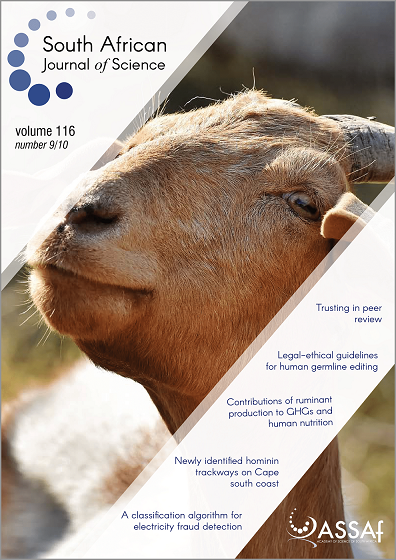Structure of the sunflower plant breeders’ rights landscape in South Africa
DOI:
https://doi.org/10.17159/sajs.2020/7966Keywords:
varieties, breeder, research, plantAbstract
Varietal innovations and protection of plant breeders’ rights (PBRs) contribute to the development of any crop’s ability to produce higher yields relatively consistently. Producing yields under adverse weather conditions and the overall characteristic of drought tolerance, make the sunflower an attractive crop for producers in dryland production regions. The main objective of this study was to give an overview of the structure of the South African sunflower breeding programme, focusing on the construction of PBRs and the leading players in sunflower breeding and seed production in South Africa. We compiled a detailed database of sunflower varietal innovations in South Africa from 1979 to 2019 using various sources such as the South African Grain Laboratory, the Department of Agriculture’s Plant Variety Journals and the Crop Estimation Committee. This data set was then analysed using descriptive statistics and trend analysis to determine the main trends in ownership of PBRs and sunflower varieties. We looked at the inclusion of new sunflower varieties on the national variety list for sunflower varietal improvements in South Africa over this period. A total of 76 PBR sunflower varietal applications were lodged for the period – an average of 1.9 applications per year. The principal applicants for varietal inclusions on the national variety list were Pannar with 102 varieties (23.8%), Pioneer seeds with 51 varieties (11%), Saffola seed with 42 varieties (9.8%) and Agricultural Research Council with 10 varieties (2.3%). In order for breeders to benefit from their investment in research and avoid exploitation of their work, they need to be protected and receive returns on their investments. Innovation can be stimulated by proper collaboration between the private and public sectors, aided by broader variety sector legislation that encourages all players to invest.
Significance:
- The study addresses the absence of empirical proof on the patterns and trends of sunflower varietal improvements in South Africa.
- The study provides evidence on the evolution of varietal rights, the extent of varietal rights granted, and which sunflower varieties were included on the national variety list and the breeders and owners of the varieties.
Published
Issue
Section
License

All articles are published under a Creative Commons Attribution 4.0 International Licence
Copyright is retained by the authors. Readers are welcome to reproduce, share and adapt the content without permission provided the source is attributed.
Disclaimer: The publisher and editors accept no responsibility for statements made by the authors
How to Cite
- Abstract 867
- PDF 806
- EPUB 198
- XML 377












.png)